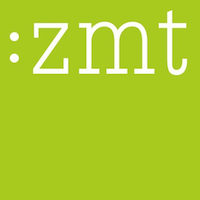| Pagine: [1 2] > | Difference between MTPE and proofreading Iniziatore argomento: Mafe Martinez
|
|---|
How do you define the boundary between proofreading and MTPE? I've been requested to do a proofreading task, but the instructions are to review a text that a translator delivered with automatic translations and to deliver a natural, well-localized, fluent, and consistent target. This is going to require a lot of rewriting, so it seems to me that it's more like MTPE, but the distinction is unclear to me. It's the first time I've been requested to do a task like this; I usually handle translations... See more How do you define the boundary between proofreading and MTPE? I've been requested to do a proofreading task, but the instructions are to review a text that a translator delivered with automatic translations and to deliver a natural, well-localized, fluent, and consistent target. This is going to require a lot of rewriting, so it seems to me that it's more like MTPE, but the distinction is unclear to me. It's the first time I've been requested to do a task like this; I usually handle translations. ▲ Collapse
| | | | Thayenga 
Germania
Local time: 11:13
Membro (2009)
Da Inglese a Tedesco
+ ...
| Proofreading & MTPE | Mar 27, 2024 |
In order to proofread a translation you actually only need said translation, though it is, of course, always helpful to have the original text ready. You only need to read the text and make (hopefully) only minor corrections.
To check an MT you oftentimes need the original text to ensure that the machine didn't produce a translation that makes no sense or is full of mistakes because it was unable to catch phrases and/or any subtext. It still happens quite often that you have to re-t... See more In order to proofread a translation you actually only need said translation, though it is, of course, always helpful to have the original text ready. You only need to read the text and make (hopefully) only minor corrections.
To check an MT you oftentimes need the original text to ensure that the machine didn't produce a translation that makes no sense or is full of mistakes because it was unable to catch phrases and/or any subtext. It still happens quite often that you have to re-translate the "final" translation. MTPE usually requires more time than a proofreading a human translation. Always charge per hour of the actual time you need to finish the project. ▲ Collapse
| | | | | Why bother distinguishing? | Mar 27, 2024 |
Whether it's machine- or human-generated, you first decide how awful it is and then decide how much to charge for it. The awfulness thing can be decided within minutes if you know what you're doing. Or do you just need a job name to write on your invoice? If a human translator was involved together with the machine and delivered a text that should be rewritten from scratch, I wonder how much that translator was paid and if the customer hadn't been better off just cutting that person out of the w... See more Whether it's machine- or human-generated, you first decide how awful it is and then decide how much to charge for it. The awfulness thing can be decided within minutes if you know what you're doing. Or do you just need a job name to write on your invoice? If a human translator was involved together with the machine and delivered a text that should be rewritten from scratch, I wonder how much that translator was paid and if the customer hadn't been better off just cutting that person out of the workflow ▲ Collapse
| | | | Zea_Mays 
Italia
Local time: 11:13
Da Inglese a Tedesco
+ ...
| proofreading vs editing vs MTPE | Mar 27, 2024 |
Editing and proofreading are two steps of the revision of a translation. The terms are often used as synonyms, but they actually relate to different things:
Editing: You'll work with source and target text, comparing them, fixing context misunderstanding/consistency issues and errors you find. You'll improve the flow and style if necessary and verify facts. For editing, you'll generally charge per hour.
Proofreading: This step is monolingual. You'll work on the target copy onl... See more Editing and proofreading are two steps of the revision of a translation. The terms are often used as synonyms, but they actually relate to different things:
Editing: You'll work with source and target text, comparing them, fixing context misunderstanding/consistency issues and errors you find. You'll improve the flow and style if necessary and verify facts. For editing, you'll generally charge per hour.
Proofreading: This step is monolingual. You'll work on the target copy only and fix little errors like typos, syntax, grammar, punctuation etc. No style improvement, verifying facts etc. Proofreading is generally charged per hour or, if the quality of the translation is known and good, 1/3 (one third) of your translation rate (per word rate).
MTPE: You'll work with source and target text and only enhance the readability and fix errors based on the client's guidelines (there are full MTPE and light MTPE). The target text should have been translated by a _trained_, dedicated MT engine, not just throwing copy in a generalist MT tool.
MTPE is generally charged per hour or, if the quality of the translation is known and acceptable, 2/3 (two thirds) of your translation rate (per word rate).
The output is of lower quality than that of human translation editing, but many today exploit the ignorance in the field to get actually editing=higher quality to a lower price.
[Bearbeitet am 2024-03-27 09:54 GMT] ▲ Collapse
| | |
|
|
|
Lieven Malaise
Belgio
Local time: 11:13
Membro (2020)
Da Francese a Olandese
+ ...
This seems like a way to make you do MTPE or conventional editing for the price of proofreading, the latter being cheaper since you are normally only supposed to read the translation itself.
If that's not the case and you are supposed to compare the translation to the source text, then you are not asked to do proofreading but editing (if the translator post-edited the machine translation output) or MTPE (if the translator didn't touch the machine translation output; but in that case... See more This seems like a way to make you do MTPE or conventional editing for the price of proofreading, the latter being cheaper since you are normally only supposed to read the translation itself.
If that's not the case and you are supposed to compare the translation to the source text, then you are not asked to do proofreading but editing (if the translator post-edited the machine translation output) or MTPE (if the translator didn't touch the machine translation output; but in that case there probably even wasn't a translator involved). ▲ Collapse
| | | |
As if it weren’t enough to confuse editing with proofreading, we now have the same “phenomenon” with proofreading and MTPE!
| | | | Daryo
Regno Unito
Local time: 10:13
Da Serbo a Inglese
+ ...
| Disagree and disagree | Mar 27, 2024 |
Thayenga wrote:
In order to proofread a translation you actually only need said translation, though it is, of course, always helpful to have the original text ready. You only need to read the text and make (hopefully) only minor corrections.
To check an MT you oftentimes need the original text to ensure that the machine didn't produce a translation that makes no sense or is full of mistakes because it was unable to catch phrases and/or any subtext. It still happens quite often that you have to re-translate the "final" translation. MTPE usually requires more time than a proofreading a human translation. Always charge per hour of the actual time you need to finish the project.
In order to proofread a translation you actually only need said translation
No ways.
Maybe in some ideal world, not in this one. To do anything with a translation, you do need the source text, no ways around it. REAL "proofreading" [not the twisted meaning added later] used to be done with "proofs" i.e. texts made ready for printing in a printing shop and essentially meant comparing the "printing proofs" with a handwritten or typed text **that is FOR SURE the "correct version"**. How on earth are you going to be sure that you know what is "the correct version" of a translation without the source text??
To check an MT you oftentimes need the original text
No ways
To check an MT you ALWAYS need the original text. Just because the MT output (notice I didn't use the word "translation") sounds "fluid" and seems to make sense DOES NOT means that it has necessarily any connection with the the original text. The most dangerous aspect of MT is not he obvious gibberish - that very obviously is wrong - but the apparently "nice sounding and logical" text. Some parts or even most parts of it might pass as "a good translation" but you can never know where you will find "nice sounding and logical" parts that have nothing to do with original text. Certainly not if don't have any "reference point" i.e. the original text. BTW some humans are also very good at producing "nice sounding" nonsense / total distortion of the ST, nothing new there.
Regarding "a proofreading task, but the instructions are to review a text that a translator delivered with automatic translations and to deliver a natural, well-localized, fluent, and consistent target", it's NOT any kind of "proofreading", it's not even "editing" it's simply penny-pinching, a.k.a MTPE i.e. trying to get a translation done at half price. If they don't want to pay translation rates or by the hour, there is this word "NO" that comes occasionally very useful.
| | | | | I'm negotiating the rates for my services | Mar 27, 2024 |
Denis Fesik wrote:
do you just need a job name to write on your invoice?
I'm negotiating rates. I informed them that my rate for MTPE is the same as for translation, as it essentially takes the same amount of time. However, my rate for proofreading is half of that. I charge per word, not per hour, although I suppose I should reconsider this approach. They labeled the job as "proofreading" but the instructions are clearly for editing.
| | |
|
|
|
Lieven Malaise
Belgio
Local time: 11:13
Membro (2020)
Da Francese a Olandese
+ ...
Daryo wrote:
No ways.
Maybe in some ideal world, not in this one. To do anything with a translation, you do need the source text, no ways around it. REAL "proofreading" [not the twisted meaning added later] used to be done with "proofs" i.e. texts made ready for printing in a printing shop and essentially meant comparing the "printing proofs" with a handwritten or typed text **that is FOR SURE the "correct version"**. How on earth are you going to be sure that you know what is "the correct version" of a translation without the source text??
I have several clients who ask me to do a proofreading once in a while, and they only send me the translation. It's a real service, you know.
Whether it's a good idea to only proofread a translation is irrelevant. It's simply up to the client. Besides, sometimes proofreading is an additional step after conventional editing.
[Bijgewerkt op 2024-03-27 10:37 GMT]
| | | | Lieven Malaise
Belgio
Local time: 11:13
Membro (2020)
Da Francese a Olandese
+ ...
Mafe Martinez wrote:
I charge per word, not per hour, although I suppose I should reconsider this approach.
You can always charge per hour, but know that most agencies won't even consider working with you if you don't offer a per-word rate. Or they will accept your hourly rate and then tell you with each assignment how many hours you are allowed to spend on it. Which is basically the same as applying a word rate.
| | | |
Lieven Malaise wrote:
This seems like a way to make you do MTPE or conventional editing for the price of proofreading
I think that's exactly what's happening here! Is this how agencies are operating now?
| | | | Lieven Malaise
Belgio
Local time: 11:13
Membro (2020)
Da Francese a Olandese
+ ...
Mafe Martinez wrote:
I think that's exactly what's happening here! Is this how agencies are operating now?
Some, without a doubt. But it has never happened to me, so it's a matter of finding the good agencies (and yes, they exist).
| | |
|
|
|
Marina Aleyeva 
Israele
Local time: 12:13
Membro (2006)
Da Inglese a Russo
+ ...
| This is redoing, not proofreading | Mar 27, 2024 |
This comment is probably going to be unpopular, but if it's obvious right from the start that the translation requires a lot of rewriting to make it look "natural, fluent" etc., then you are going to end up redoing it all. I would refuse to do it and would drop the client a "mission impossible" note. Yes, they will find someone else to do it, for sure. But if this is their modus operandi then I would say to myself - so be it.
On a side note, the requirement to make a "natural, well-... See more This comment is probably going to be unpopular, but if it's obvious right from the start that the translation requires a lot of rewriting to make it look "natural, fluent" etc., then you are going to end up redoing it all. I would refuse to do it and would drop the client a "mission impossible" note. Yes, they will find someone else to do it, for sure. But if this is their modus operandi then I would say to myself - so be it.
On a side note, the requirement to make a "natural, well-localized, fluent, and consistent target" out of an automatic translation suggests the client is well aware of the issues involved with using automatic translations and the amount of work it takes to turn them into something decent, but wants you to absorb the costs. How clever. ▲ Collapse
| | | | IrinaN
Stati Uniti
Local time: 04:13
Da Inglese a Russo
+ ...
No ways.
Besides, sometimes proofreading is an additional step after conventional editing.
[Bijgewerkt op 2024-03-27 10:37 GMT] [/quote]
In the previous life all my agencies had correctors aka proofreaders (the latter term has not even been used), and those guys didn't have to understand the first thing about the content. That was the responsibility of the editors. When confused by the brain-wrecking content to the point of having doubts about the sentence structure, c... See more No ways.
Besides, sometimes proofreading is an additional step after conventional editing.
[Bijgewerkt op 2024-03-27 10:37 GMT] [/quote]
In the previous life all my agencies had correctors aka proofreaders (the latter term has not even been used), and those guys didn't have to understand the first thing about the content. That was the responsibility of the editors. When confused by the brain-wrecking content to the point of having doubts about the sentence structure, correctors would double-check with editors but that happened once in a few months or so. The editors didn't have to be distracted with commas etc. Most of them, of course, would correct minor things automatically but nevertheless, it wasn't their final responsibility for the print-ready version.
Modern smartpants used the confusion in understanding and interpreting the term "proofreader" and dumped 75% of editing tasks onto the translators themselves, and 100% of corrector's tasks onto the editors dubbed proofreaders. "Proofreader" even sounds like a "cheaper version" of "editor", hence the rates
Our specs imply translator, editor, corrector and formatter/DTP specialist for the proper process. The latter may indeed be obsolete in most cases these days. Believe it or not, those times actually existed in the last century and through 2010-ish, and all translators have been paid at least .12/word before rush fee without funny matches, repetitions and darn CATs et al altogether. For every single word, including computer-counted numbers already in the original.
In this life I no longer care ▲ Collapse
| | | |
I have been working for a while with a British communications agency and the work goes through several phases:
1. Translation;
2. Edition by another translator (we work as a team) (bilingual);
3. Revision by the client;
4. Introduction of the changes made by the client (occasionally these are not changes to the translation but to the text or both);
5. Creation of the Pdf by the agency;
6. Final check (proofreading) of the Pdf (typos, punctuation…) (mo... See more I have been working for a while with a British communications agency and the work goes through several phases:
1. Translation;
2. Edition by another translator (we work as a team) (bilingual);
3. Revision by the client;
4. Introduction of the changes made by the client (occasionally these are not changes to the translation but to the text or both);
5. Creation of the Pdf by the agency;
6. Final check (proofreading) of the Pdf (typos, punctuation…) (monolingual).
Of course, this means that the work drags on for months, but each phase is invoiced and paid for accordingly and on time. I’d like all agencies to work like that, but I know it’s just wishful thinking… ▲ Collapse
| | | | | Pagine: [1 2] > | To report site rules violations or get help, contact a site moderator: You can also contact site staff by submitting a support request » Difference between MTPE and proofreading | Pastey | Your smart companion app
Pastey is an innovative desktop application that bridges the gap between human expertise and artificial intelligence. With intuitive keyboard shortcuts, Pastey transforms your source text into AI-powered draft translations.
Find out more » |
| | Wordfast Pro | Translation Memory Software for Any Platform
Exclusive discount for ProZ.com users!
Save over 13% when purchasing Wordfast Pro through ProZ.com. Wordfast is the world's #1 provider of platform-independent Translation Memory software. Consistently ranked the most user-friendly and highest value
Buy now! » |
|
| | | | X Sign in to your ProZ.com account... | | | | | |
































